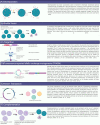Got mutants? How advances in chlamydial genetics have furthered the study of effector proteins
- PMID: 33512479
- PMCID: PMC7862739
- DOI: 10.1093/femspd/ftaa078
Got mutants? How advances in chlamydial genetics have furthered the study of effector proteins
Abstract
Chlamydia trachomatis is the leading cause of infectious blindness and a sexually transmitted infection. All chlamydiae are obligate intracellular bacteria that replicate within a membrane-bound vacuole termed the inclusion. From the confines of the inclusion, the bacteria must interact with many host organelles to acquire key nutrients necessary for replication, all while promoting host cell viability and subverting host defense mechanisms. To achieve these feats, C. trachomatis delivers an arsenal of virulence factors into the eukaryotic cell via a type 3 secretion system (T3SS) that facilitates invasion, manipulation of host vesicular trafficking, subversion of host defense mechanisms and promotes bacteria egress at the conclusion of the developmental cycle. A subset of these proteins intercalate into the inclusion and are thus referred to as inclusion membrane proteins. Whereas others, referred to as conventional T3SS effectors, are released into the host cell where they localize to various eukaryotic organelles or remain in the cytosol. Here, we discuss the functions of T3SS effector proteins with a focus on how advances in chlamydial genetics have facilitated the identification and molecular characterization of these important factors.
Keywords: Chlamydia; effector; genetics; inclusion; inclusion membrane protein; type III secretion.
© The Author(s) 2021. Published by Oxford University Press on behalf of FEMS.
Figures





References
-
- Abdelrahman YM, Belland RJ. The chlamydial developmental cycle. FEMS Microbiol Rev. 2005;29:949–59. - PubMed
-
- Al-Zeer MA, Al-Younes HM, Kerr Met al. . Chlamydia trachomatis remodels stable microtubules to coordinate Golgi stack recruitment to the chlamydial inclusion surface. Mol Microbiol. 2014;94:1285–97. - PubMed
Publication types
MeSH terms
Substances
Grants and funding
LinkOut - more resources
Full Text Sources
Other Literature Sources
Medical

